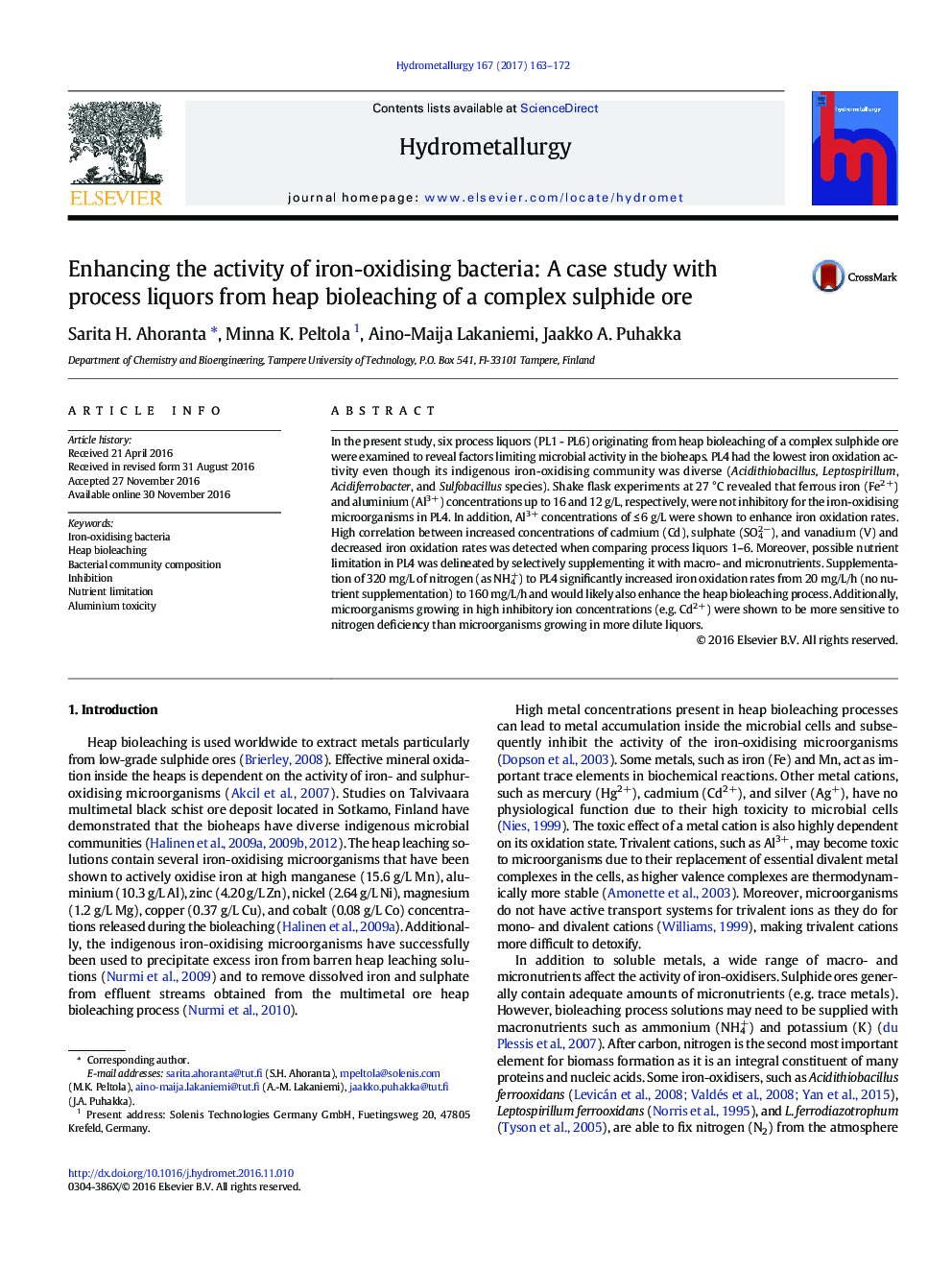| کد مقاله | کد نشریه | سال انتشار | مقاله انگلیسی | نسخه تمام متن |
|---|---|---|---|---|
| 4769399 | 1425537 | 2017 | 10 صفحه PDF | دانلود رایگان |
- Fe2+ concentrations up to 16Â g/L did not inhibit the studied iron-oxidisers.
- Al3+ concentrations of 6Â g/L and below enhanced iron oxidation rates.
- High cadmium, sulphate, and vanadium concentrations decreased iron oxidation rates.
- Ammonium supplementation to bioheaps would enhance the heap bioleaching process.
- High inhibitory ion content increases microbial sensitivity to nitrogen deficiency.
In the present study, six process liquors (PL1 - PL6) originating from heap bioleaching of a complex sulphide ore were examined to reveal factors limiting microbial activity in the bioheaps. PL4 had the lowest iron oxidation activity even though its indigenous iron-oxidising community was diverse (Acidithiobacillus, Leptospirillum, Acidiferrobacter, and Sulfobacillus species). Shake flask experiments at 27 °C revealed that ferrous iron (Fe2+) and aluminium (Al3+) concentrations up to 16 and 12 g/L, respectively, were not inhibitory for the iron-oxidising microorganisms in PL4. In addition, Al3+ concentrations of â¤Â 6 g/L were shown to enhance iron oxidation rates. High correlation between increased concentrations of cadmium (Cd), sulphate (SO42â), and vanadium (V) and decreased iron oxidation rates was detected when comparing process liquors 1-6. Moreover, possible nutrient limitation in PL4 was delineated by selectively supplementing it with macro- and micronutrients. Supplementation of 320 mg/L of nitrogen (as NH4+) to PL4 significantly increased iron oxidation rates from 20 mg/L/h (no nutrient supplementation) to 160 mg/L/h and would likely also enhance the heap bioleaching process. Additionally, microorganisms growing in high inhibitory ion concentrations (e.g. Cd2+) were shown to be more sensitive to nitrogen deficiency than microorganisms growing in more dilute liquors.
Journal: Hydrometallurgy - Volume 167, January 2017, Pages 163-172
